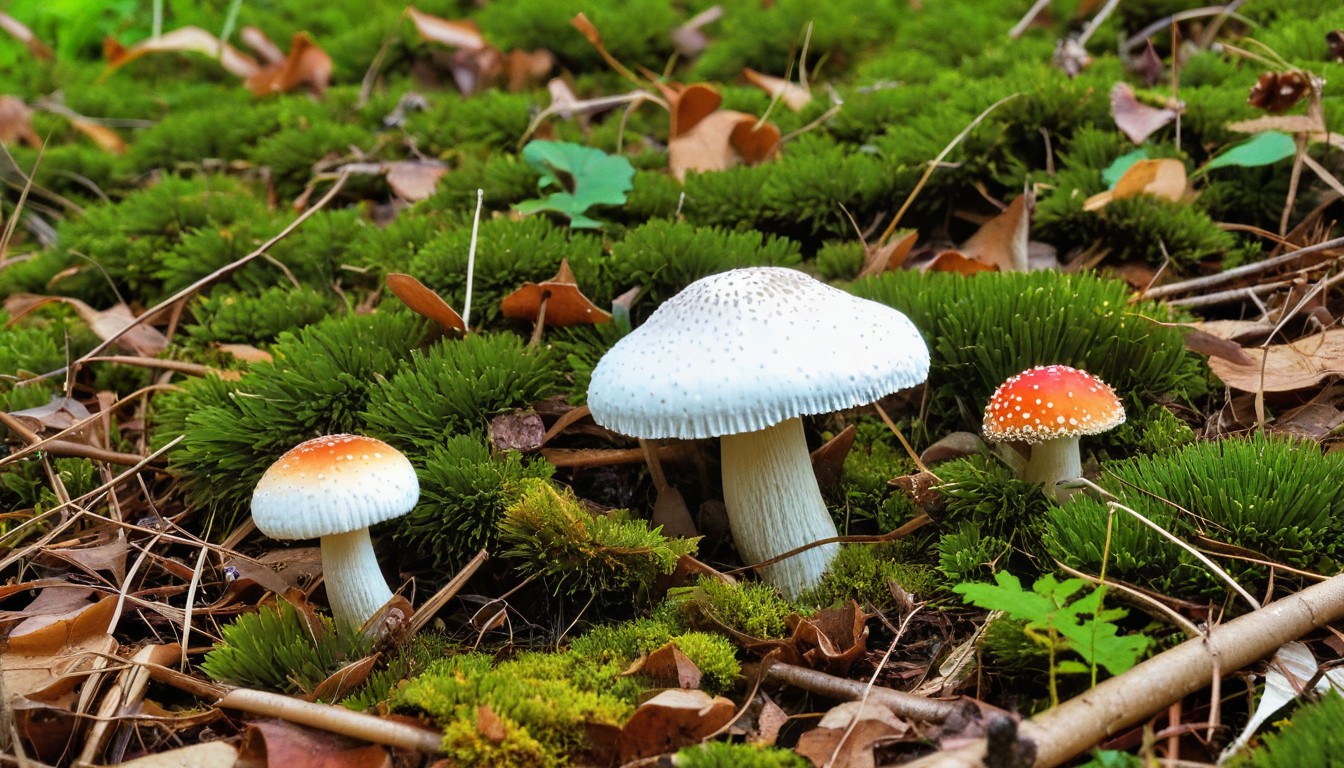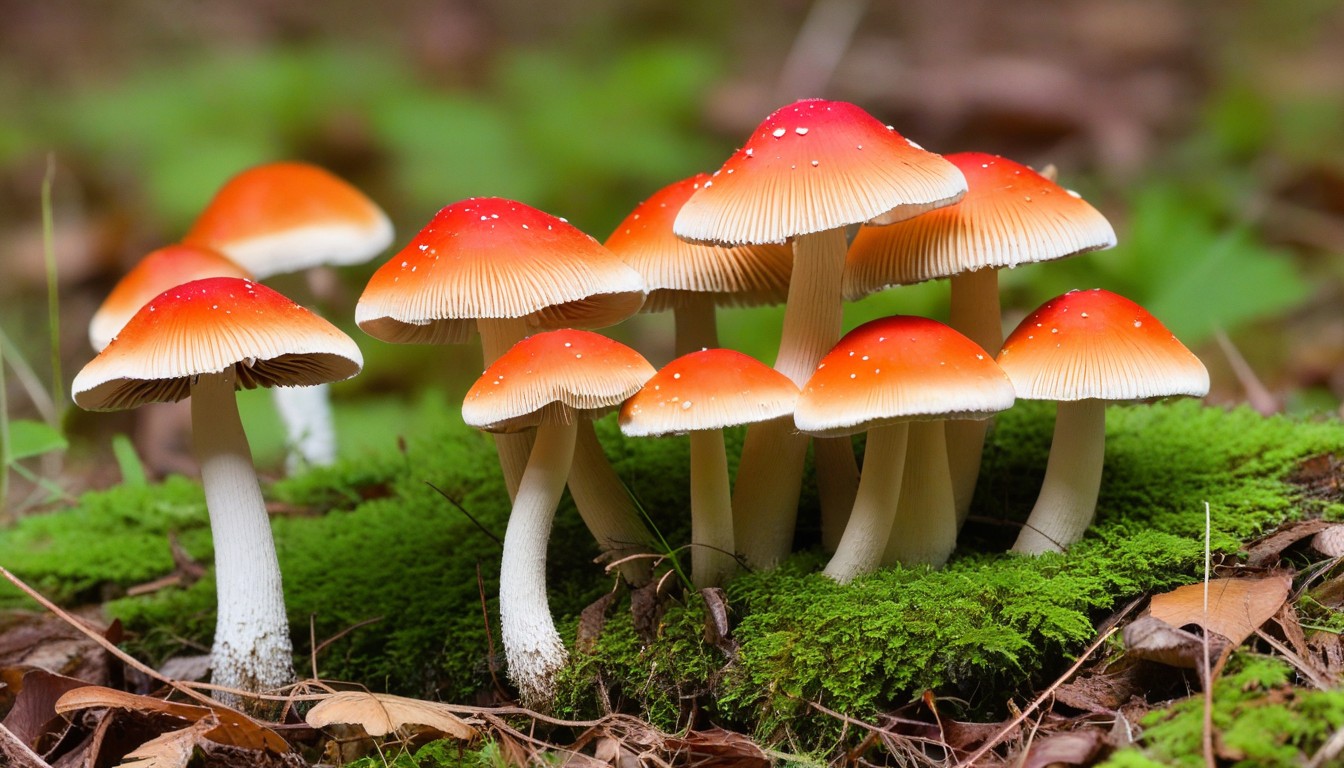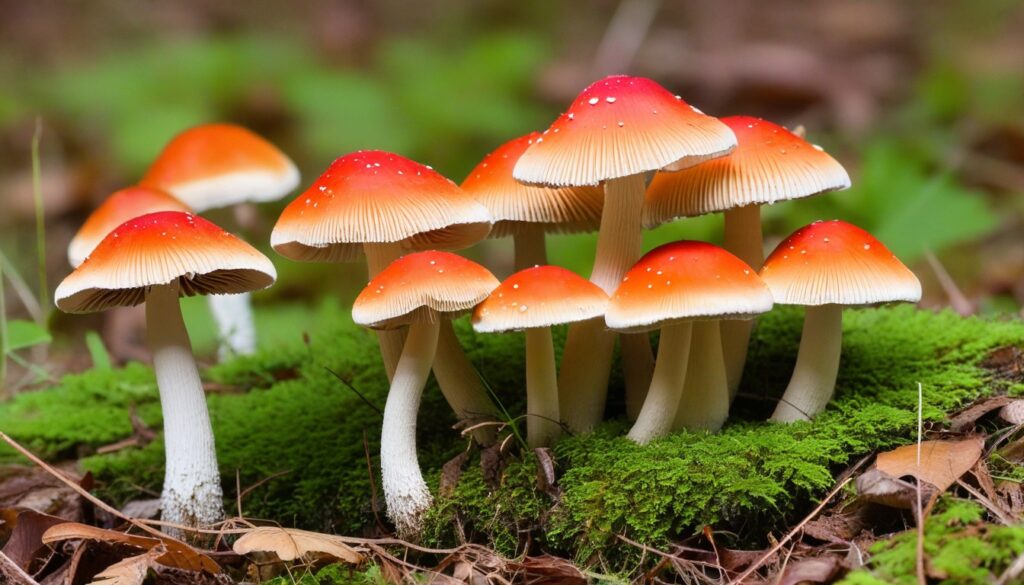Are you planning an outdoor adventure in Mississippi and wondering how to identify and avoid poisonous mushrooms? Look no further! In this comprehensive guide, we will provide a safe guide to help you confidently enjoy nature without the risk of ingesting toxic varieties.
Key Takeaways:
- Mississippi is home to various poisonous mushroom species.
- Proper identification and knowledge of toxic mushrooms are essential to avoid poisoning.
- Safe foraging practices and expert advice can enhance your experience and reduce the risk of accidents.
- Prevention is the key to ensuring a safe and enjoyable outdoor experience.
- If you suspect mushroom poisoning, seek medical attention immediately.
Understanding Poisonous Mushrooms
Before you head out to explore Mississippi’s lush forests and vibrant landscapes, it’s essential to understand the basics of poisonous mushrooms. These fungi can pose significant health risks to humans and animals if ingested.
To begin with, it’s important to note that poisonous mushrooms share many characteristics with non-toxic varieties, making it challenging to distinguish between the two. They come in various shapes, sizes, and colors, and some of them are deadly even in small quantities.
While the vast majority of mushroom species in Mississippi are non-toxic, it’s crucial to recognize the most dangerous types and take the necessary precautions to avoid them. Let’s dive into some of the general dangers of poisonous mushrooms.
Potential Dangers of Poisonous Mushrooms
Potential risks of ingesting poisonous mushrooms: |
|---|
Gastrointestinal distress: consuming toxic mushrooms can cause nausea, vomiting, diarrhea, and other digestive issues. |
Organ damage: some poisonous mushrooms can cause severe damage to vital organs like the liver, kidneys, and central nervous system. |
Death: in extreme cases, poisonous mushrooms can be lethal, causing cardiac arrest, respiratory failure, and other life-threatening complications. |
With these potential dangers in mind, it’s crucial to educate yourself on the basics of identifying and avoiding poisonous mushrooms, especially if you plan to forage for edible varieties.
Common Poisonous Mushrooms in Mississippi
Mississippi is home to several species of poisonous mushrooms that can pose a threat to those who accidentally consume them. Below are some of the most common toxic varieties found in the state, along with their distinguishing features and potential toxicity:
Name | Distinctive Features | Potential Toxicity |
|---|---|---|
Amanita phalloides | White to pale green stalk, white gills, and a cap that ranges from light green to brown, with scales or patches of veil remnants on its surface. | Highly toxic; can cause liver and kidney failure. |
Gymnopilus junonius | Orange-brown to cinnamon-brown, slimy cap, orange/brown stalk, and dark, rusty-orange spore print. | Moderately toxic; can cause nausea, vomiting, and abdominal cramps. |
Galerina marginata | Yellow-brown to brown cap and stalk; gills turn rusty brown as the mushroom matures. | Highly toxic; can cause liver damage and death. |
Conocybe filaris | Tan to brown cap, slender stalk, and light brown spores. | Highly toxic; can cause seizures, coma, and death. |
It’s important to note that this list is not exhaustive, and there are other poisonous mushrooms found in Mississippi. Therefore, it’s crucial to be cautious and avoid consuming any wild mushrooms unless you have expert knowledge and are 100% confident in their identification.
Identifying Poisonous Mushrooms

Proper identification is essential when it comes to avoiding mushrooms that could be poisonous. By knowing how to differentiate between toxic and harmless varieties, you can confidently forage for mushrooms without any risks. Here is a step-by-step guide on identifying potentially toxic mushrooms and differentiating them from common harmless varieties found in Mississippi.
Characteristics of Poisonous Mushrooms
It’s essential to know that characteristics of poisonous mushrooms to stay safe. Poisonous mushrooms often have distinctive features that differentiate them from edible species. These are the key characteristics to look out for:
- Foul odor or taste
- Bright colors, including red, orange, and yellow
- White gills or spores
- Ring or cup-shaped structures around the stems
- Bruising or discoloration when touched
These are guidelines, but some edible mushrooms may have similar characteristics to poisonous ones. Therefore, it is essential to examine each mushroom’s unique features carefully before consuming or collecting it.
Differentiating Between Poisonous and Harmless Mushrooms
There are over 3,000 mushroom species in Mississippi, but only a few are toxic. Here are some easy tips and tricks you can use when identifying mushrooms to avoid any risks:
Poisonous Mushrooms | Harmful Look-Alikes | Key Differences |
|---|---|---|
Amanita bisporigera | Agaricus californicus | Amanita bisporigera has a volva surrounding the base of its stem while Agaricus californicus has a ring around the stem instead. |
Conocybe filaris | Psilocybe fimetaria | Conocybe filaris has a bell-shaped cap, while Psilocybe fimetaria has a flat cap. |
Galerina marginata | Armillaria mellea | Galerina marginata’s gills are attached to the stem, while Armillaria mellea has free gills that do not touch the stem. |
Final Thoughts
Properly identifying potentially toxic mushrooms is crucial when it comes to staying safe while foraging. Always remember to examine each mushroom’s unique characteristics, use handy tips and tricks, and differentiate toxic mushrooms from harmless ones before consuming them. By following these simple steps, you can confidently and safely enjoy foraging for mushrooms in Mississippi’s great outdoors.
Toxicity Symptoms and First Aid

Recognizing the symptoms of mushroom poisoning is crucial for prompt medical attention. Symptoms range from mild to life-threatening and vary depending on the type of mushroom ingested. Common symptoms of mushroom toxicity include:
- Stomach pain
- Vomiting
- Diarrhea
- Sweating
- Convulsions
- Coma
If you or someone near you shows signs of mushroom poisoning, don’t wait. Follow these first aid measures:
- Call emergency services immediately
- Rinse out the mouth and remove any bits of mushroom residue from the mouth and teeth
- Collect leftover mushroom pieces in an airtight bag for identification by a professional mycologist
- Do not induce vomiting unless advised by medical personnel
- Gently clean the affected area if the mushroom has touched the skin
- Avoid giving medications or food and drink unless directed by medical personnel
Remember, time is of the essence when it comes to mushroom poisoning. Seek urgent medical assistance to ensure proper diagnosis and treatment.
Safe Mushroom Foraging Practices
Foraging for mushrooms is a popular activity in Mississippi, and it can be a fun way to get outdoors and explore nature. However, it’s important to take precautions to ensure that you are gathering mushrooms safely. Here are some safe mushroom foraging practices to follow:
1. Know Your Mushrooms
Before you go mushroom foraging, make sure you know how to identify the edible varieties from the poisonous ones. Familiarize yourself with the characteristics of each type of mushroom and double-check with a field guide or expert if you are unsure.
2. Bring the Right Equipment
When foraging for mushrooms, bring along a bag, a knife, and a basket to collect your finds. Pack a first aid kit in case of emergency and a field guide for reference. Wear appropriate footwear and clothing, such as long pants, long sleeves, and gloves.
3. Respect the Environment
While foraging, make sure to respect the environment and the other creatures that live there. Only take what you need, and try not to disturb the habitat. Follow designated trails and do not trespass in private property.
4. Practice Proper Storage
After gathering your mushrooms, store them properly to prevent spoilage and to maintain their freshness. Remove any dirt or debris from the mushrooms, and store them in a breathable container or paper bag. Keep them in the refrigerator and eat them within a few days.
5. Cook Your Mushrooms Thoroughly
Before consuming your foraged mushrooms, make sure to cook them thoroughly to destroy any potential pathogens or harmful toxins. Never eat mushrooms raw or undercooked.
By following these safe mushroom foraging practices, you can enjoy the experience while minimizing the risks associated with mushroom gathering. Remember to always prioritize your safety and consult with experts if you have any questions or concerns.
Mushroom Look-Alikes

When foraging for mushrooms in Mississippi, it is essential to be cautious of look-alike species that may resemble poisonous mushrooms. These harmless mushrooms may share similar features, such as color and shape, with their toxic counterparts, making it challenging to differentiate them. Here are some common mushroom look-alikes found in Mississippi:
Mushroom Name | Features | Distinguishing Characteristics |
|---|---|---|
Black Trumpet | Dark brown to black funnel-shaped cap, wavy margin | Gill attachment to the stem (adnate in Black Trumpet, decurrent in Chanterelle) |
Chanterelle | Yellow or orange funnel-shaped cap, wavy margin | Gill attachment to the stem (adnate in Black Trumpet, decurrent in Chanterelle) |
Jelly Babies | Small, white, yellow, orange, or red cap, thin stem | Gill attachment to the cap (adnate in False Chanterelle, decurrent in real Chanterelle) |
If in doubt, it is always best to avoid consuming mushrooms that you are unsure about. Remember to thoroughly research and educate yourself on the specific characteristics of each mushroom species to avoid any potential risks.
Expert Advice and Resources
Are you looking for expert advice or more information about mushrooms in Mississippi? Look no further than local mycological societies and online resources.
Local mycological societies, such as the Mississippi Gulf Coast Mushroom Society and the Mississippi Mushroom Club, offer a wealth of knowledge and resources for mushroom enthusiasts. These societies frequently hold events, workshops, and foraging expeditions, allowing you to connect with fellow enthusiasts and expand your knowledge of the mushrooms found in your area.
Online platforms, such as the North American Mycological Association and Mushroom Observer, provide extensive information and resources on mushroom identification, toxicity, and safe foraging practices. These resources can help you make informed decisions while exploring the world of fungi.
Preventing Mushroom Poisoning

Mushroom foraging is a popular pastime in Mississippi. Still, it comes with potential risks, as some fungi are highly toxic and can cause severe health problems, or even death, when ingested. Fortunately, you can take precautionary measures to minimize the risk of mushroom poisoning and ensure a safe experience for you and your companions.
Recognize and Avoid Poisonous Mushrooms
The first and most crucial step in preventing mushroom poisoning is to identify toxic varieties correctly. Always carry a reliable field guide picturing the poisonous mushrooms and consult it before consuming any fungi. If you are not entirely sure about a species, it’s best to leave it be rather than pick it. Never consume mushrooms based on guesswork and assumptions.
Stick to Edible Mushrooms
The best way to avoid toxic varieties is to search only for mushrooms that you know are safe to eat and have edibility records. Vote for the popular mushroom species that are commonly consumed in Mississippi, such as portobello, shiitake, and oyster mushrooms. These species have been commercially cultivated, and it’s hard to mistake them for poisonous varieties.
Cook Your Meals Thoroughly
While some edible mushrooms can be consumed uncooked, it’s best to cook most varieties thoroughly. Cooking causes the breakdown of heat-labile toxins present in mushrooms. Boiling in slightly salty water is highly recommended as it helps remove water-soluble toxins. Ensure that you do not mix cooked and raw mushrooms as the toxic juices may leach into the remaining raw ones, causing illness when consumed.
Seek Expert Help
Finally, if you have any doubts, don’t hesitate to consult a local mycological society or an expert in mushroom identification. There are many online resources available to help you better understand the various species that grow in Mississippi. It’s always better to be safe than sorry when it comes to picking and consuming wild mushrooms.
Conclusion
As you can see, staying safe while enjoying the outdoors in Mississippi requires some basic knowledge about poisonous mushrooms. However, with the help of our guide, you can confidently identify and avoid these potentially harmful fungi, allowing you to fully appreciate the natural beauty of Mississippi.
Remember to always practice safe mushroom foraging practices, including properly identifying mushrooms and seeking expert advice when needed. By following these guidelines, you can prevent mushroom poisoning and ensure a safe and enjoyable outdoor experience for you and your companions.
Thank you for taking the time to read our safe guide to poisonous mushrooms in Mississippi. We hope this information has been helpful and informative. For further assistance and expert advice, don’t hesitate to reach out to local mycological societies or online platforms dedicated to the world of fungi.
FAQ
What are the most common poisonous mushrooms found in Mississippi?
Some of the most common poisonous mushrooms in Mississippi include Amanita bisporigera (Destroying Angel), Amanita ocreata (Western Destroying Angel), Amanita phalloides (Death Cap), and Gyromitra esculenta (False Morel). It is important to be able to identify these toxic species to avoid ingestion.
How can I identify poisonous mushrooms?
Identifying poisonous mushrooms involves observing various characteristics such as the cap shape, color, texture, presence of gills or pores, stalk features, and spore print color. It is recommended to rely on field guides, online resources, and expert advice to ensure accurate identification.
What are the symptoms of mushroom poisoning?
Symptoms of mushroom poisoning can vary depending on the toxic species ingested. They may include nausea, vomiting, diarrhea, abdominal pain, sweating, dizziness, hallucinations, liver damage, and even death. If you suspect mushroom poisoning, seek medical help immediately.
What should I do if someone ingests a poisonous mushroom?
If someone accidentally ingests a poisonous mushroom, it is crucial to call emergency services or a poison control center immediately. While waiting for professional help, ensure the person does not vomit, keep them calm, and provide water to rinse their mouth. Do not induce vomiting.
How can I prevent mushroom poisoning?
To prevent mushroom poisoning, it is important to educate yourself about the toxic mushrooms in your area, strictly avoid consuming wild mushrooms unless you are an expert, always cook mushrooms thoroughly, and gather mushrooms only from trusted and reputable sources.
Are there any mushrooms that look similar to poisonous varieties?
Yes, there are mushrooms that can look similar to poisonous varieties, known as look-alikes. For example, false morels (Gyromitra esculenta) resemble edible morels but are toxic. It is crucial to learn how to distinguish these look-alikes to avoid potential risks.
Where can I find expert advice and further information about mushrooms in Mississippi?
You can seek expert advice and further information about mushrooms in Mississippi from local mycological societies, mushroom identification forums, and online resources such as reputable websites, blogs, and books dedicated to mycology.
Is mushroom foraging legal in Mississippi?
Mushroom foraging is generally legal for personal use in Mississippi. However, specific rules and regulations may apply in certain areas or on public lands. It is crucial to check local regulations, obtain necessary permits if required, and respect the environment while foraging.

